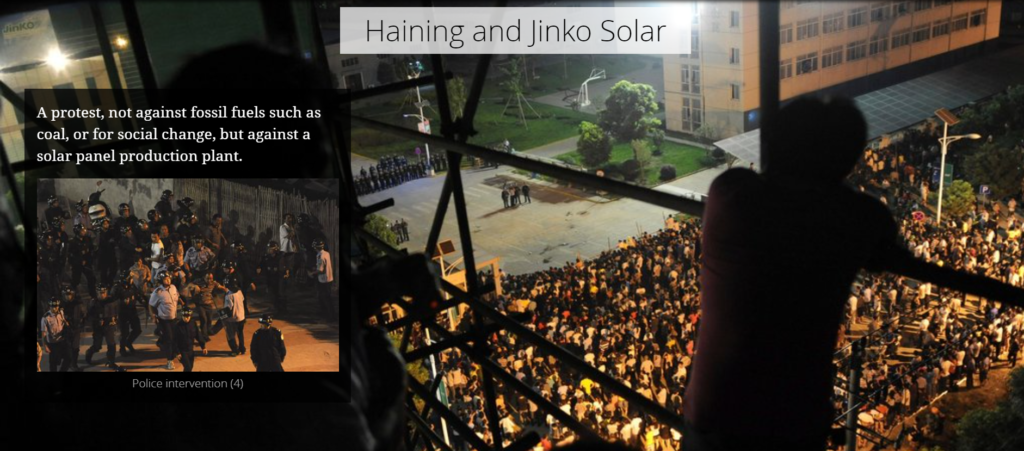Chinese Solar Companies Tied to Slavery
The New York Times had an interesting article on Jan. 8 detailing how the Chinese solar industry is tied to “forced labor,” which is also known as slavery.
“In a flat, arid expanse of China’s far west Xinjiang region, a solar technology company welcomed laborers from a rural area 650 miles away, preparing to put them to work at GCL-Poly, the world’s second-largest maker of polysilicon.”
“The workers, members of the region’s Uighur minority, attended a class in etiquette as they prepared for their new lives in the solar industry, which prides itself as a model of clean, responsible growth. GCL-Poly promoted the housing and training it offered its new recruits in photographs and statements to the local news media.”
A “class in etiquette” sounds an awful lot like a reeducation camp.
“But researchers and human rights experts say those positive images may conceal a more troubling reality — the persecution of one of China’s most vulnerable ethnic groups. According to a report by the consultancy Horizon Advisory, Xinjiang’s rising solar energy technology sector is connected to a broad program of assigned labor in China, including methods that fit well-documented patterns of forced labor.”
China is the single largest source of solar panels in the world, according to a study in the academic journal Energies, meaning much of the global supply of solar panels could be manufactured using slave labor.

Chinese solar manufacturing facilities also have an awful track record of environmental stewardship. In fact, in 2011, protests erupted outside a Jinko solar manufacturing plant because the company was accused of dumping toxic wastewater into nearby rivers, causing the death of local wildlife, especially fish.

The New York Times piece states that the problem is widespread among Chinese solar panel companies:
“Major solar companies including GCL-Poly, East Hope Group, Daqo New Energy, Xinte Energy and Jinko Solar are named in the report as bearing signs of using some forced labor, according to Horizon Advisory, which specializes in Chinese-language research. Though many details remain unclear, those signs include accepting workers transferred with the help of the Chinese government from certain parts of Xinjiang, and having laborers undergo “military-style” training that may be aimed at instilling loyalty to China and the Communist Party.”
“The Chinese government disputes the presence of any forced labor in its supply chains, arguing that employment is voluntary. The companies named in the report either did not respond to requests for comment or denied any role in forced labor.”
“The assertions from Horizon Advisory imply that much of the global solar supply chain may be tainted by an association with forced labor. Such charges could hurt its progressive image and risk product bans from Washington.”
Not only are solar panels likely manufactured with slave labor while causing environmental damage, but they are also manufactured using cheap electricity from coal-fired power plants! The New York Times writes:
“Xinjiang’s polysilicon production increased rapidly over the past decade, mostly because of cheap electricity from local coal plants and other government support, Ms. Chase said.”
While politicians and interest groups in Minnesota and the United States are pushing to shut down our reliable, affordable coal plants, they are also pushing for a massive expansion of solar capacity that will be fueled by slave labor and electricity generated at Chinese coal-fired power plants. How does this make any rational sense?
Slaves are also used at non-ferrous metal companies:
Another subsidiary of East Hope, Xinjiang East Hope Nonferrous Metals Co., “accepted 235 ethnic minority employees from southern Xinjiang,” who were given training to make up for “low educational qualifications, weak national language skills and insufficient job skills,” according to a report on the company’s website.
The most damning paragraph in the article follows below:
“Nathan Picarsic, a founder of Horizon Advisory, said what the firm had documented was likely “just the tip of the iceberg.” If Americans are buying solar panels made with materials from these Chinese companies, he said, “I would say you are complicit in perpetuating this Chinese industrial policy that suppresses and disenfranchises human beings.”
Given that Chinese firms use slave labor, exhibit no concern for the environment, and use cheap coal-fired electricity to make their solar panels, it is no wonder that solar panel prices have declined, but at an enormous cost for humanity and nature.
Those who support mandating more solar panels onto America’s electric grid need to answer the tough questions about why they want to force all Americans to prop up Chinese solar companies that use slave labor. Why are they demanding we shut down our reliable, affordable coal plants when China is using coal-fired electricity to make the solar panels we would purchase?
How does that help the environment? How does that make America a better country or the world a better place?